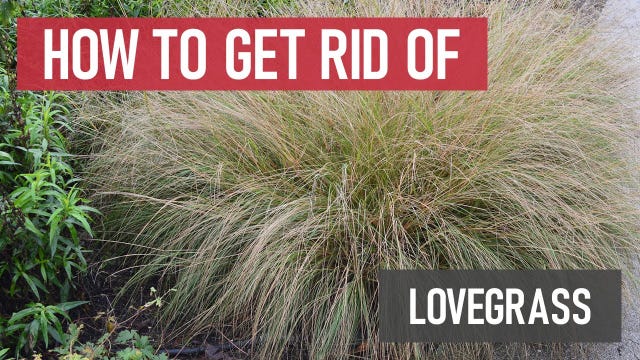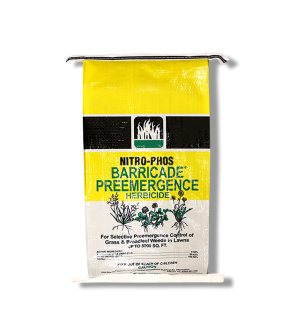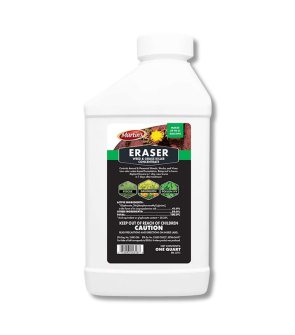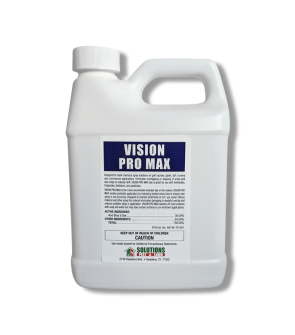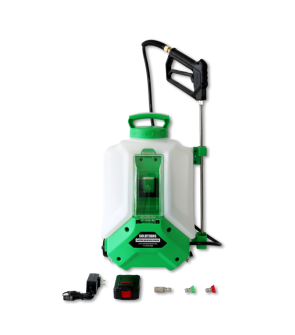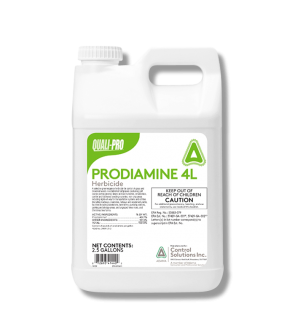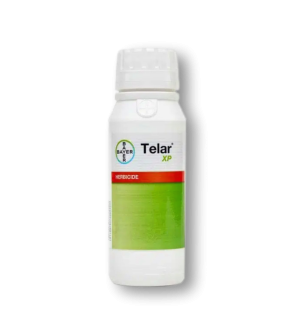Gain access to personalized product screening, the best pricing, rewards, and more!
Most Effective Products
Lovegrass Control: How to Get Rid of Lovegrass
This page is a general DIY guide for controlling lovegrass. Using the products and methods suggested, you will get control of lovegrass. Follow this DIY article and use the recommended products; we guarantee 100% control of lovegrass.
While some species of lovegrass are native to the United States of America and do not have the same negative impact, most of the problematic varieties are non-native. They can become aggressive, crowding out native plants and altering local ecosystems.
Depending on the region, lovegrass is known by other names, such as canegrass, stink grass, and other plants in the genus Eragrostis. However, one thing each species of lovegrass will share is its ability to spread aggressively and become poisonous if consumed in large enough amounts for livestock.
Another major issue is its potential to increase wildfires since it dries so quickly. Furthermore, lovegrass can cause soil degradation by altering soil composition and making it difficult for native plants to grow. For all of these reasons and more, should prompt property owners to remove and control lovegrass, which can be done with the products in our DIY guide.
Identification
Before proceeding with a treatment program, you need to be certain that the weed infesting your property is lovegrass. Careless identification can lead to using the wrong treatment methods, which can waste time and money. Depending on the species, it will vary in features, but generally, each species will share these characteristics:

- Most species of lovegrass grows to be 1 to 3 feet tall, 1 to 2 feet wide, and in low-growing bunched or tufted clumps with thin, wiry stems.
- The leaves are narrow and range from green, bluish-green, lavender, pink, tan, grayish-green, or reddish purple. During the fall, these leaves will lose their coloration and turn brown, reddish purple, tan, or reddish.
- Depending on the species, you will see tiny, delicate flowers appear in the summer and fall. They will grow in delicate, airy, open clusters with numerous spikelets at the top of the stems.
Use the description and image above to help you properly identify lovegrass on your property. If unsure, contact us and send a photo of your weed through email or in-person at one of our store locations so we can help you identify the weed and suggest treatment options.
Inspection
Once it is confirmed that you are dealing with lovegrass, you can move on to inspection. During this phase, you will locate areas where lovegrass thrives and observe the conditions allowing it to succeed. This information will help you in knowing where to focus your herbicide application.

Where to Inspect
Many species of lovegrass are drought tolerant and prefer to grow in sites with full access to the sun. They can also grow in various soils, especially sandy, rocky, clay, and loamy.
Depending on the species, they can commonly be found in prairies, open woodlands, along roadsides and trails, open fields, grasslands, savannas, meadows, rangelands, crop fields, sand dunes, coastal regions, hillsides, parking lots, driveways, walkways, and other disturbed areas.
Some types of lovegrass are used for lawns and ornamental grass plants in sites with sandy, rocky, or loamy soils. It is uncommon to find this plant in your lawn or ornamental garden.
What to Look For
As a warm-seasoned plant, lovegrass can be expected to bloom from July to August. By early fall (July to October), some species may turn brown, tan, or reddish before going dormant for winter.
Treatment
Before you begin any herbicide application, be sure to wear the proper personal protective equipment (PPE).
A herbicide containing glyphosate, imazapyr, sethoxydim, or flupropanate would work best against lovegrass.
The best time to control lovegrass is when the foliage is actively growing and before it sets seeds.
Step 1: Mix Herbicide

Determine how much Eraser 41% Glyphosate to use by measuring the square footage of the treatment area. Find the square footage by measuring the treatment areas' length and width in feet, then multiplying them together (length X width = square footage).
Keep in mind this product is non-selective, meaning it will kill any vegetation it comes into with.
This product will need to be mixed with water in a handheld pump sprayer or backpack sprayer.
We recommend marking off the sprayer for non-selective use only to avoid cross-contamination with other pesticides.
To use Eraser 41% Glyphosate as a general spot treatment, use 2 1/2 oz. of product with 1 gallon of water to treat 300 sq. ft.
To keep track where you have applied this herbicide, mix in a dye like Vision Pro Max. Vision Pro Max Indicator Dye is a blue dye that aids herbicides, fungicides, and other pesticides during spraying. It will turn treated areas blue temporarily helping applicators prevent overspraying and better track of where the product has been sprayed.
Add 0.10 oz. of Vision Pro Max Indicator Dye per 1 gallon of spray solution.
Fill your spray tank with half the amount of water, add the proper amount of product and dye, and then pour in the remaining half of the water.
Close the tank lid and shake until the solution is well-mixed.
Step 2: Apply Herbicide
Spray the top and bottom of weed leaves until wet, but not to the point of runoff.
On tall, dense stands, it is often necessary to spray from all sides to obtain adequate coverage.
It’s best to apply on a warm sunny day when daytime temperatures are above 60 degrees Fahrenheit. Weed control is accelerated by warm sunny weather. Avoid applications when rainfall is expected to occur within the next 2 hours of application.
Keep people and pets out of the treated area until the spray has completely dried.
Most treated weeds will show symptoms in 2 to 4 days and a complete kill in 1 to 2 weeks.
If retreatment is needed, reapply when 4 weeks have passed from the first application.
Prevention
Once you have eliminated lovegrass from your property, you will want to make sure it does not return. Take on the following preventative measures to prevent lovegrass from returning:
- To prevent lovegrass, we recommend making pre-emergent herbicide treatments with Barricade Pre-Emergent Herbicide. This product is a granular pre-emergent herbicide that will prevent grassy and broadleaf weeds from appearing in residential lawns, commercial lawns, landscape ornamentals, and wildflower plantings. Depending on your turf species, you may use anywhere from 1.5 to 4 pounds of Barricade per 1,000 sq. ft. For landscape ornamentals, the application rate will be between 2.5 and 5.94 lbs. of product per 1,000 sq. feet. You will need to use a push spreader, handheld spreader, or broadcast spreader. Calibrate your spreader to the proper setting and load with the correct amount of granules. Spread the granules evenly across the treatment area. Once the application is complete, you will water the granules in with 0.5 inches of irrigation.
- Overgrazing can promote lovegrass growth, so maintain a proper grazing plan with your livestock.
- Clean equipment such as tractors, mowers, sprayers, and other tools used in property care to prevent the spread of seeds into an uninfested area.
- Introduce native grasses or cover crops that can outcompete lovegrass.
Key Takeaways
What is Lovegrass?
- Lovegrass is a warm-season bunchgrass that forms dense stands and grows rapidly in infested areas.
How to Get Rid of Lovegrass
- You will need to use a post-emergent herbicide such as Eraser 41% Glyphosate. To aid in application, we suggest combining this herbicide with Vision Pro Max Indicator Dye.
Preventing Lovegrass Reinfestation
- To prevent lovegrass, apply a pre-emergent herbicide in the early spring and again in the fall when soil temperatures are between 55 to 70 degrees Fahrenheit. Barricade Pre-Emergent Herbicide would do the job against lovegrass.






